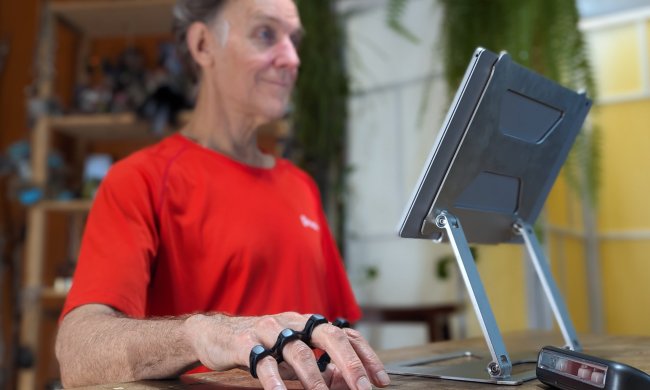
Microsoft’s HoloLens 2 may have a new challenger next year. Smartphone maker Oppo has announced a pair of augmented reality glasses, and stated they will be released during the first three months of 2020. Oppo’s AR Glass headset is part of an effort to expand beyond only making smartphones, and was revealed alongside plans for a smartwatch and an Oppo-produced mobile processor.
Oppo’s AR Glass is similar in design to HoloLens. A visor stretches across the front of the headset, attached to a band which holds it on your head, plus there is a forehead rest to keep it in position. This is not something designed for everyday wear, but more for home and industrial use. At home, Oppo says the AR Glass will be used for augmented reality content and games, while in the workplace, and somewhat less specifically, Oppo sees it being used for augmented reality services. These could include 3D modeling, planning, and design.
What about the hardware inside AR Glass? What we know so far is there are two fisheye cameras on the front of the headset, providing a wide field of view, plus a third camera, and a time-of-flight sensor to measure distance. What we don’t know is any of the firm specifications behind these, including the actual field of view measurement, or the definition of the camera, or the resolution of the display itself. On stage, Oppo showed a demonstration of the glasses being used to explore a model of the solar system, with information on each planet popping up as it was selected using gestures.

In addition to the hand gestures, the Oppo AR Glass will respond to voice controls, and the headset is apparently slimmer and lighter than Microsoft’s HoloLens. Outside of these basic details, nothing else is known about AR Glass. The price has not been discussed, and neither has where the headset will be sold. Oppo’s main market is China, where it’s the third most popular smartphone brand, so a release there is inevitable. However, Oppo has recently stretched out into the U.K. and Europe, along with a strong presence in India and elsewhere in Asia as well.
Oppo will officially launch the AR Glass during the first three months of 2020. Microsoft’s HoloLens 2 costs $3,500 and is aimed primarily at businesses.



